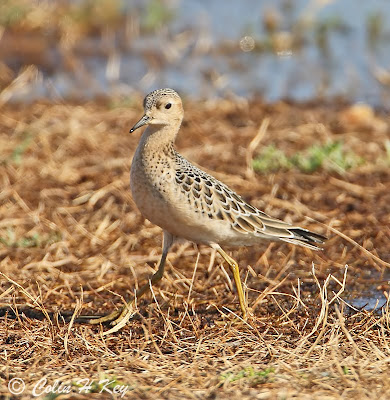Parque Ambiental de Vilamoura
This giant reed-bed with pools and watercourses fed by the adjacent ETAR (sewage treatment works) is one of the Algarve's best-kept secrets. It is near the horrible marina town of Vilamora and next to the even more horrible golf complexes and I still managed to get lost trying to find the entrance, such is the rate at which new blocks of apartments are being built and new roads and roundabouts installed between my visits. There used to be a visitor centre at the northern end but that is now closed, but there are currently two bird-watching hides and a third elevated hide overlooking the sewage works (a magnet for gull, terns and ducks) is planned.
On 30th November I decided to have a bash at photographing the Penduline Tits which over-winter in quite large numbers (I have seen flocks of a dozen birds or more). I entered on the east side by the ETAR and immediately flushed an adult male Little Bittern and adult Squacco Heron from the old circular tank to the right of the track. A little further along this track and a juvenile Purple Heron flew out of the ditch which seperates the track from the ETAR (very late in the year for this species to be around).
Suddenly every gull and duck roosting on the treatment pools took flight, the result of a low-flying pale-phase Booted Eagle

What happened next was one of the most amazing birding sights I have witnessed: as the eagle skimmed over the top of a row of rather ugly, dense conifers which line the edge of the ETAR a flock of Black-crowned Night Herons erupted from the trees and circled above my head. I counted eleven birds, all apparently adults, and managed to get a few usable shots despite the low, bright sunlight making things rather difficult.


I did not find the Penduline Tits, and the weather rapidly deteriorated from bright, hot sunshine to grey cloud, a strong icy wind and a brief hailstorm so I departed, again pondering on just how long this wild, beautiful place can exist before it becomes engulfed by the shit which surrounds it.




































